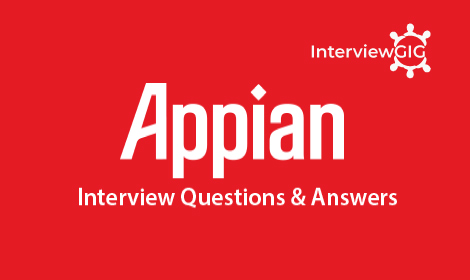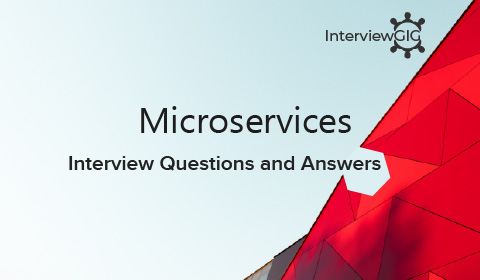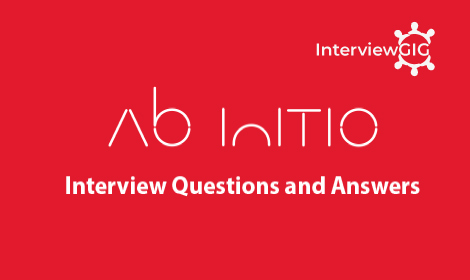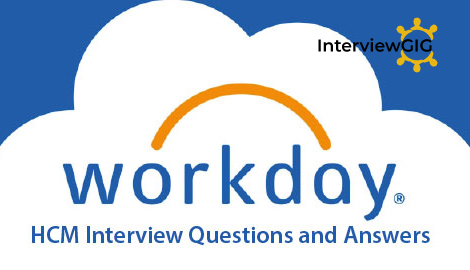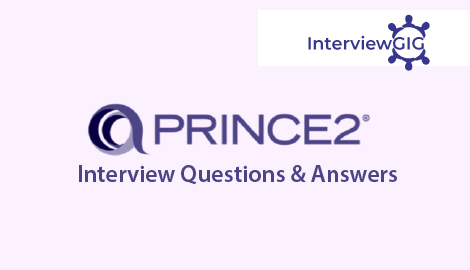IT Project Manager Interview
In the realm of IT project management, the ability to navigate complex scenarios is crucial for success. In this blog, the most frequently asked scenario-based interview questions are explored, along with insightful answers designed to help candidates excel in their upcoming interviews. Whether a fresher or an experienced professional, the questions presented are tailored to provide a competitive edge by highlighting real-world challenges and effective solutions in IT project management.
Key scenarios will be examined, practical examples will be shared, and effective responses will be outlined to demonstrate problem-solving skills, leadership qualities, and industry expertise. This valuable resource is not to be missed for those looking to prepare thoroughly and confidently for their next interview.
First Question: Can you explain your experience managing IT projects and highlight your most successful project?
Sample Answer:
I have over [X years] of experience managing IT projects across various industries, including [specific industries]. One of my most successful projects was the implementation of a company-wide CRM system that improved customer engagement and streamlined internal processes. The project required cross-departmental coordination, and I employed Agile methodology to ensure flexibility and adaptability. Despite tight deadlines, I managed to deliver the project two weeks early and under budget by 15%, leading to a 25% increase in sales team efficiency and higher customer satisfaction ratings.
Question: What is your preferred project management methodology (Agile, Waterfall, Hybrid, etc.)?
Sample Answer:
My preferred methodology depends on the project’s needs. For IT projects with evolving requirements, I prefer Agile because it allows iterative development and continuous stakeholder collaboration. However, for projects with clearly defined goals and deliverables, I find Waterfall effective. In some cases, I’ve used a Hybrid approach, combining Agile’s flexibility with Waterfall’s structure, to manage complex projects requiring detailed upfront planning and room for adaptive execution.
Question: Describe a time when a project went off track. How did you recover?
Sample Answer:
During a software upgrade project, the timeline was delayed due to unexpected compatibility issues with legacy systems. To address this, I convened an urgent team meeting to reassess priorities and allocate resources to resolving the issue. I also communicated transparently with stakeholders about the delay and adjusted the project plan to include additional testing phases to prevent similar setbacks. By fostering collaboration and maintaining open communication, we managed to deliver the project with only a two-week delay, ensuring long-term system stability and stakeholder satisfaction.
Question: Can you describe your process for risk management in IT projects?
Sample Answer:
My risk management process involves identifying potential risks early in the project and categorizing them based on their likelihood and impact. I create a comprehensive risk register and develop mitigation strategies for high-priority risks. Regular risk assessment meetings are held to ensure the team stays proactive in addressing new or evolving risks.
For example, during a recent project, I identified a potential vendor delay as a high-impact risk and proactively sourced a secondary vendor. This contingency plan ensured that the project proceeded without interruption, even when the primary vendor faced unforeseen challenges.
Question: How do you motivate and inspire your team members?
Sample Answer:
I believe in fostering a collaborative and supportive environment where team members feel valued and empowered. I set clear expectations and ensure that each member understands how their work contributes to the project’s success. I also recognize and celebrate achievements, both big and small, to keep morale high.
For instance, during a demanding project rollout, I organized weekly “team check-ins” to address concerns and highlight accomplishments. I also encouraged professional development by offering resources and training aligned with their career goals, which helped maintain motivation and ensured high performance.
Question: A critical project is behind schedule due to unforeseen technical challenges. How do you address this situation?
Sample Answer:
When a project face delays due to technical challenges, my first step is to assess the root cause by consulting with the team members directly involved. I prioritize tasks based on impact and allocate additional resources or expertise if needed. Communication with stakeholders is critical—I update them on the situation, provide a revised timeline, and outline the steps being taken to get back on track.
In a recent project, a critical software module required extensive debugging, which put us behind schedule. I brought in a subject matter expert, reorganized the timeline, and adjusted lower-priority tasks. This collaborative effort allowed us to recover most of the lost time and maintain stakeholder confidence.
Question: A new, high-priority project is assigned to your team. How do you balance it with existing commitments?
Sample Answer:
Balancing a new project with existing commitments requires strategic prioritization and resource management. I evaluate the scope and urgency of all projects, consult with stakeholders, and, if necessary, renegotiate deadlines or reallocate resources.
For instance, when a high-priority project was recently assigned mid-cycle, I worked with the team to identify non-critical tasks in ongoing projects that could be deferred. Additionally, I sought temporary support from other departments and communicated the adjustments clearly with all stakeholders. This ensured smooth progress across all projects without compromising quality.
Question: You’re managing a project where team members are experiencing conflicts. How would you handle this?
Sample Answer:
When conflicts arise, I address them promptly by bringing the involved parties together in a neutral and constructive setting. I listen to each perspective without bias, identify the root cause of the disagreement, and work collaboratively to find a solution.
In one instance, a conflict arose over task ownership in a development project. I facilitated a discussion where we clarified roles, responsibilities, and expectations. By emphasizing the project’s goals and fostering mutual respect, I was able to realign the team’s focus and restore collaboration, which ultimately strengthened team dynamics.
Question: A stakeholder demands a feature that was not part of the initial project scope. What steps do you take?
Sample Answer:
When a stakeholder requests a feature outside the initial scope, I first evaluate its impact on the project timeline, budget, and resources. I arrange a meeting with the stakeholder to understand the business value of the request and explain the implications of scope changes. If the feature is critical, I work on creating a change request, ensuring all adjustments are documented and approved by key stakeholders.
In one project, a client requested a last-minute feature. By proposing a phased approach—implementing the core functionality immediately and the additional feature in a future release—we maintained the project’s schedule while meeting the client’s needs.
Question: What is your experience with Agile methodologies like Scrum and Kanban?
Sample Answer:
I have extensive experience with Agile methodologies, particularly Scrum and Kanban. In Scrum, I have served as both a Scrum Master and Product Owner, organizing sprints, facilitating daily stand-ups, and ensuring the team delivers incremental value. I’ve used Kanban for projects requiring continuous delivery and flexibility, where I set up visual boards to track progress and identify bottlenecks.
For example, in a software development project, I used Scrum for structured sprint planning and Kanban to manage the support and maintenance queue. This hybrid approach improved delivery times and team efficiency while maintaining high-quality standards.
Question: What is your approach to change management?
Sample Answer:
My approach to change management begins with understanding the nature and impact of the proposed change. I document the change request and assess how it affects project scope, timeline, budget, and resources. I then collaborate with stakeholders to evaluate its necessity and prioritize accordingly.
For implementation, I update the project plan, communicate changes clearly to all team members, and ensure proper training or resources are in place if required. For example, during a recent system migration project, a new compliance requirement arose mid-project. I promptly conducted a feasibility analysis, revised the timeline, and allocated additional resources to address the change while minimizing disruptions.
Question: How do you measure project ROI?
Sample Answer:
I measure project ROI by comparing the project’s anticipated benefits to its total costs. This includes quantifiable metrics like increased revenue, cost savings, or efficiency improvements and intangible benefits such as improved customer satisfaction or employee productivity.
For instance, in an IT infrastructure upgrade project, I calculated ROI by analyzing reductions in maintenance costs and improvements in system uptime. Post-implementation, I conducted a review to measure actual performance against projections and documented lessons learned for future projects.
Question: What tools and software do you typically use for IT project management?
Sample Answer:
I use a combination of tools to manage IT projects effectively. For project planning and task tracking, I prefer tools like Microsoft Project, Jira, and Trello. For communication and collaboration, I rely on Slack, Microsoft Teams, and Confluence. Additionally, I use Power BI for data visualization and reporting, and SharePoint for document management.
For example, in an Agile development project, I used Jira for sprint planning and tracking, integrated with Confluence to maintain documentation, which streamlined workflows and improved transparency.
Question: How do you handle resource allocation for multiple concurrent projects?
Sample Answer:
Managing resources across multiple projects requires careful planning and prioritization. I start by assessing each project’s resource needs, timelines, and priorities. I then create a resource allocation matrix to identify potential conflicts or overlaps and reassign tasks accordingly. Regular check-ins with team leads help ensure that workloads are balanced and deadlines are met.
For instance, when managing three IT projects simultaneously, I used resource planning software to allocate shared team members effectively and maintained open communication to quickly resolve any conflicts.
Question: What steps do you take to manage a major change request in the middle of a project?
Sample Answer:
When faced with a major change request, I follow a structured approach. First, I analyze the request to understand its scope, impact, and alignment with project objectives. Next, I discuss the request with the stakeholders, outlining potential effects on the timeline, budget, and resources. If approved, I document the change, update the project plan, and communicate adjustments to the team.
For example, in a software development project, a client requested additional integration features mid-cycle. By reprioritizing tasks, adjusting the budget, and extending the timeline with stakeholder approval, I successfully accommodated the request without compromising quality.
Question: Can you give an example of a project where you proactively managed risks and avoided potential issues?
Sample Answer:
In a data migration project, I identified early on that delays in receiving data from a third-party vendor could jeopardize the timeline. To mitigate this, I implemented a risk management plan that included weekly check-ins with the vendor and a contingency plan to use partial data sets for testing. Additionally, I allocated extra resources to expedite testing once data arrived. As a result, we avoided significant delays and ensured a seamless migration, with the system going live on schedule.
Question: Mid-project, the budget is cut by 20%. How would you reprioritize and adapt the project plan?
Sample Answer:
When facing a budget cut, I prioritize project deliverables by identifying the core objectives and deferring or eliminating non-essential features. I collaborate with stakeholders to revise the scope and timeline, ensuring alignment with the new budget. In one instance, I managed a project where the budget was reduced by 20%. By renegotiating vendor contracts and optimizing resource allocation, we delivered the primary objectives without compromising quality, while deferring lower-priority features to a later phase.
Question: A key team member leaves the project unexpectedly. How do you ensure continuity and minimize disruption?
Sample Answer:
When a key team member leaves, my priority is to ensure continuity by redistributing their tasks among existing team members based on skill sets and availability. I also review project documentation to minimize knowledge gaps and, if necessary, onboard a replacement quickly.
For example, in a development project, a lead developer left unexpectedly. I conducted a knowledge transfer session with the departing team member and assigned their tasks to two senior developers while expediting the recruitment process for a replacement. This ensured the project remained on track with minimal disruption.
Question: Tell us about a time when you managed a project that didn’t go as planned. How did you handle it?
Sample Answer:
During a software deployment project, unforeseen integration issues with legacy systems caused significant delays. I immediately brought the team together to diagnose the problem and devised a phased deployment plan to address the critical functionality first.
Simultaneously, I kept stakeholders informed and realigned expectations. Post-deployment, I initiated a lessons-learned session to document challenges and improve processes. Although the project was delayed by two weeks, the phased approach ensured minimal business disruption and a successful final outcome.
Question: Describe a situation where you had to mediate between conflicting stakeholders to achieve consensus.
Sample Answer:
In a CRM implementation project, two stakeholder groups disagreed on the prioritization of features—one prioritized sales-related functionality, while the other emphasized customer support tools. To mediate, I organized a joint workshop to identify shared goals and encouraged each group to present their perspectives. Using data-driven insights, I proposed a phased approach, implementing sales features in phase one and customer support enhancements in phase two. By focusing on common objectives and maintaining open communication, I successfully achieved consensus, ensuring stakeholder satisfaction and project progress.
Question: Share an example of how you dealt with a high-pressure situation in an IT project.
Sample Answer:
In a critical system upgrade project, an unexpected server failure occurred just days before the scheduled go-live date, putting the timeline at risk. I quickly assembled a cross-functional team to troubleshoot the issue and set up a war room for real-time collaboration. I delegated tasks efficiently, kept stakeholders informed with hourly updates, and ensured the team stayed focused.
By working through the weekend and implementing a temporary fix, we managed to meet the go-live date successfully. This experience reinforced the importance of teamwork and clear communication in high-pressure situations.
Question: Have you ever had to terminate a project? If so, how did you manage the process?
Sample Answer:
While I haven’t had to terminate a project, I understand that sometimes it’s necessary to make tough decisions. If faced with such a situation, I would first conduct a thorough analysis to determine the root causes of the project’s failure. I would then communicate the decision transparently to all stakeholders, explaining the reasons for termination and the steps being taken to mitigate any negative impacts. It’s essential to handle the termination process professionally and ethically, maintaining positive relationships with clients and team members.
Question: You’re tasked with managing an IT project for a client with limited technical knowledge. How would you approach communication?
Sample Answer:
For clients with limited technical knowledge, I use clear, jargon-free language and focus on explaining the value and outcomes of technical decisions. I provide visual aids like diagrams or dashboards to make complex information accessible and schedule regular updates to maintain transparency.
In a recent project, I created simplified status reports and used analogies to explain technical constraints to a non-technical client. This approach ensured their understanding and engagement, building trust and alignment throughout the project.
Question: project team encounters resistance to adopting new technology. How would you manage this situation?
Sample Answer:
When facing resistance to new technology, I focus on understanding the team’s concerns by holding open discussions. I provide training and demonstrations to show the benefits of the technology and address any skill gaps. Additionally, I identify early adopters within the team to act as advocates for the change.
For instance, during a cloud migration project, initial resistance stemmed from concerns about learning curves. By organizing hands-on training sessions and offering continuous support, the team became more confident and enthusiastic about the transition.
Question: The client is unhappy with the deliverables presented during a milestone review. What steps would you take to address their concerns?
Sample Answer:
If a client is unhappy with the deliverables, I would first listen attentively to their concerns and seek to understand their perspective. I would then conduct a thorough review of the deliverables to identify any issues or areas for improvement. I would work with the team to address the client’s concerns and implement necessary changes. Open and honest communication with the client throughout the process is crucial to maintain a positive relationship.
Question: A security breach occurs within your project. How do you respond to the incident and minimize the damage?
Sample Answer:
In the event of a security breach, I would immediately activate the incident response plan. This would involve isolating the affected systems, containing the breach, and investigating the root cause. I would also notify relevant stakeholders, including legal and security teams. Once the immediate threat is contained, I would conduct a thorough forensic analysis to identify the vulnerabilities and implement measures to prevent future incidents. Transparent communication with stakeholders is essential to maintain trust and confidence.
In conclusion, the insights provided in this blog are intended to equip candidates with the knowledge and confidence needed to excel in IT project management interviews. The scenario-based questions discussed have been crafted to reflect the complexities of real-world project management challenges. By utilizing the suggested answers, candidates will be better positioned to showcase their skills and experiences effectively. It is hoped that this resource will serve as a comprehensive guide, enabling candidates to approach their interviews with a sense of preparedness and assurance, ultimately leading to successful outcomes in their careers.

